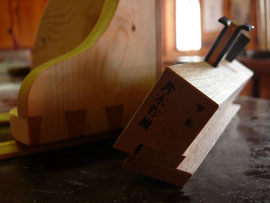
My grandfather gave me some good advice for choosing my profession: “Whatever you do, a trade in hand finds gold in every land.” And I still believe in that to this day, especially in times, where the economy needs to recognise that never-ending growth is not possible and everybody should take charge of their own future.
At the same time, most large companies with automated production lines determine the company image in handicraft. In the case of homogenous materials such as plastic, this may still be bearable,
yet what about wood and its many properties and features? Anyone merely shoving the material through a machine soon loses his eye for detail. And I am not writing here in a mean way against
modern businesses but rather from my own experience.
Thus, when beginning my self-employment, I don’t invest immediately in a large amount of machinery but rather in good hand tools and reading material, with the help of which I was able to teach
myself the old handicraft techniques.
By the way, many of the old tips and tricks are as simple as they are efficient, but a passion for wood is required to go the sometimes long path of “trial and error” to the end.
Yet even I have to think and work economically.
Today, the blanks are shaped with a band saw and a planer, but right after that, I move on to manual work. At the beginning, I used to stand in sawdust up to my waist (somewhat exaggerated), in
order to prepare a few swords. Yet neither the customer nor my body are still prepared to pay that price. For the professional processing of other raw materials, I do it the same as with wood and
turn to master craftsmen from my area who still work manually as in former times, whether a cobbler, crocker or blacksmith.
The individual trades and production processes will be documented in this blog in the future and accompanied by photos and videos. It’s worth taking a look!